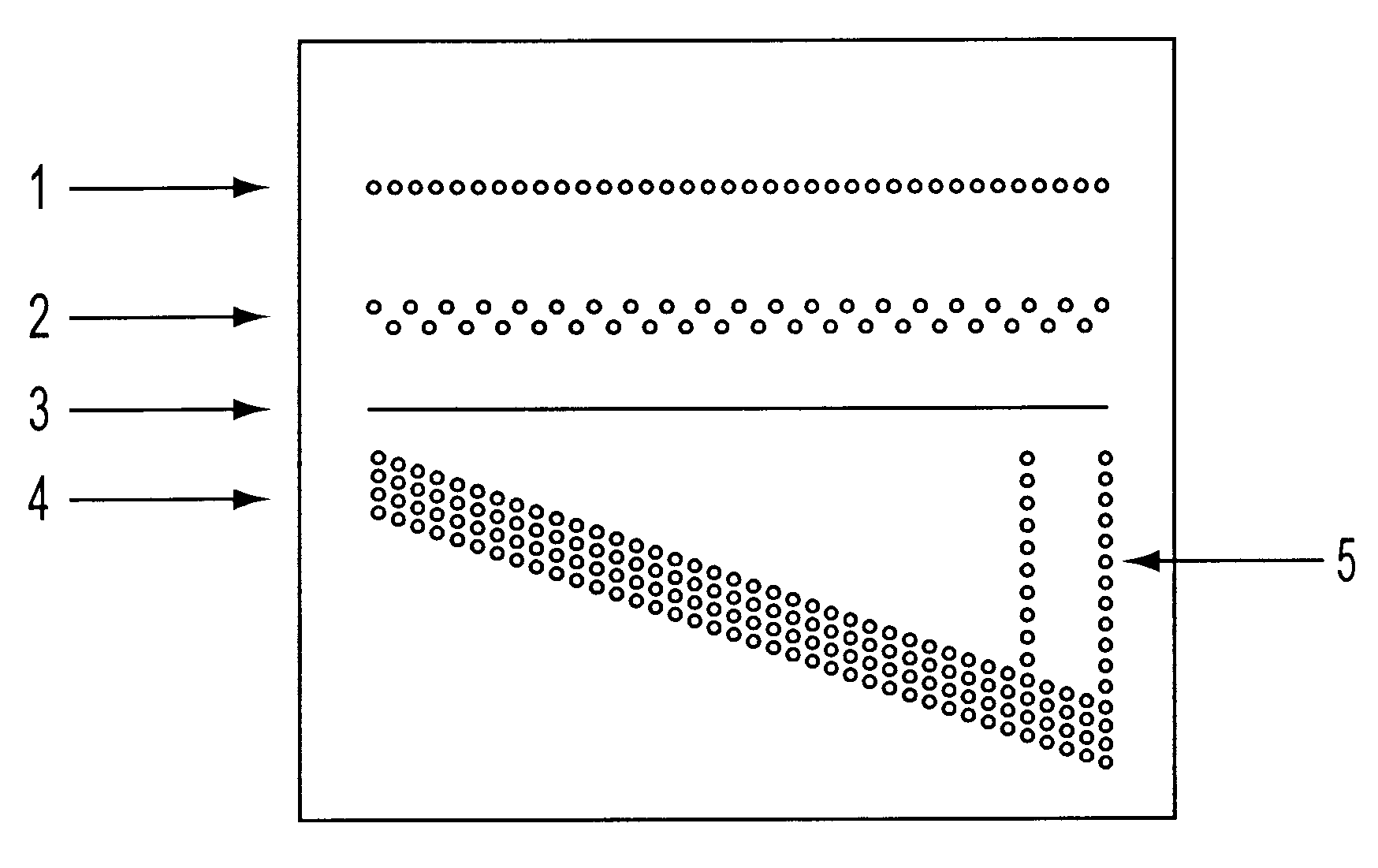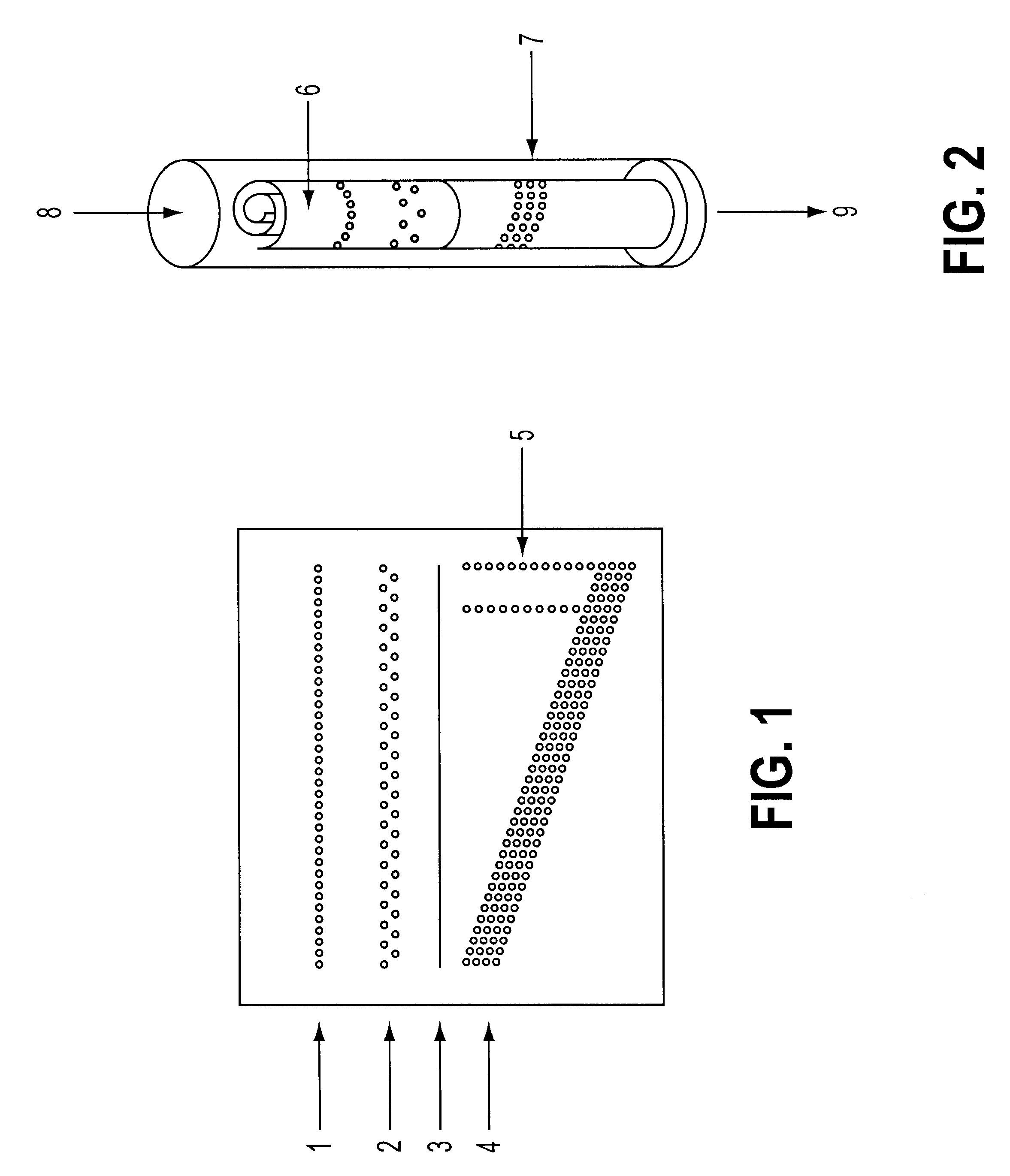Separation by magnetic particles
- Summary
- Abstract
- Description
- Claims
- Application Information
AI Technical Summary
Benefits of technology
Problems solved by technology
Method used
Image
Examples
example i
A. Construction of the magnetic matrix
Eight flat square fine tincoated magnets, 20 mm each side and 4 mm thick (VACODYM198 370 HR P / N 66750490, Vacuumschmelze GmbH, Germany) were attached in pairs to give 4 (40 mm.times.20) mm rectangles. Each of the 4 rectangles were separated from each other by 40 mm.times.20 mm.times.2 mm rubber sheets, to form alternating layers of magnets and rubber. This construction forms a box which narrow side has 4 strips of magnets 40 mm long and 4 mm wide, separated by strips of rubber 40 mm long and 2 mm thick and will be referred to hereinafter as the "stripped magnet ", or a flat magnet.
The above box can also be constructed without use of the rubber strips so its side has a dimension of 40.times.16 mm or 20.times.32 mm, which construct will be referred to hereinafter as the "uniform magnet".
B. Preparing a magnetic particle matrix integrated in agarose
A silicon rubber rectangular frame 1 mm thick, 7.times.7 cm outer dimension and 5.times.5 cm inner cas...
example ii
Preparation of a matrix of magnetic particles as an integral part of the gel
A solution of magnetic particles (EMG 705 Water Base Ferrofluid Ltd., Israel) was manually applied on to the surface of pergameneous paper with the aid of the tip of a glass Pasteur pipette in a pattern of diagonal strips, and left to dry for 1 hr.
The paper was then glued to a glass plate via contact glue or a double face adhesive tape. A silicon rubber rectangular frame, 1 mm thick, 7.times.7 cm outer dimension and 5.times.5 cm inner casting space was placed on the glued paper and attached by 4 clips. The glass plate was placed on a gel casting table equilibrated to a temperature of 35.degree. C. A polypropylene support net, 100 .mu.m thick, 200 .mu.m pore diameter was placed into the casting space prior to pouring the gel. 3 ml of 2% aqueous solution of agarose low-electroendosmosis (05071, Fluka, Switzerland) in a temperature of 60.degree. C. was poured into the casting space. The gel was covered with a g...
example iii
Collecting of magnetic particles from a specific location in a matrix
Four magnets as described above were placed on a 7.times.7.times.0.3 cm tin-coated iron plate in two pairs and separated from one another by a gap of 3 cm. The tin-coated iron plate was placed on the magnets and a tin-coated iron net having holes in the size of 1 mm was placed on the iron plate and held by the magnetic force of the two pairs of magnets. 1 gr iron powder, 50-150 .mu.m in particle size, was placed on the net and gently spread in the net area above the 3 cm gap between the magnets. The net and magnetic force held the particles so tightly that a wet filter paper placed on the net and pressed by a second tin-coated iron plate for 10 min. did not remove any of the particles.
A tapered electromagnet was used to collect the particles from the net. The net enables the collection of particles from each hole of 1 mm in size separately, with no lateral movement of particles from the other holes (see FIG. 5(a) a...
PUM
| Property | Measurement | Unit |
|---|---|---|
| Density | aaaaa | aaaaa |
| Magnetism | aaaaa | aaaaa |
Abstract
Description
Claims
Application Information
 Login to View More
Login to View More - R&D
- Intellectual Property
- Life Sciences
- Materials
- Tech Scout
- Unparalleled Data Quality
- Higher Quality Content
- 60% Fewer Hallucinations
Browse by: Latest US Patents, China's latest patents, Technical Efficacy Thesaurus, Application Domain, Technology Topic, Popular Technical Reports.
© 2025 PatSnap. All rights reserved.Legal|Privacy policy|Modern Slavery Act Transparency Statement|Sitemap|About US| Contact US: help@patsnap.com



